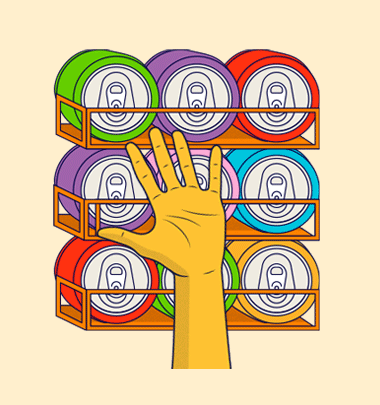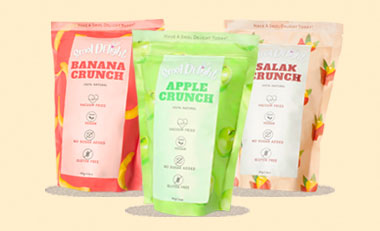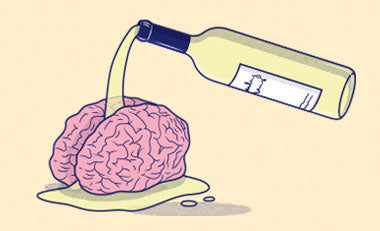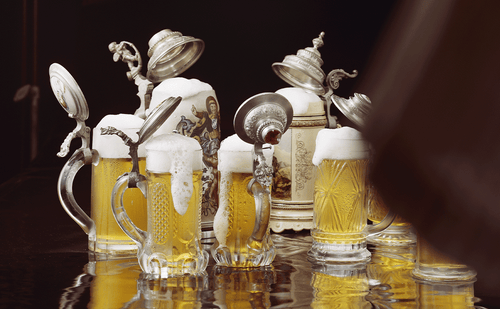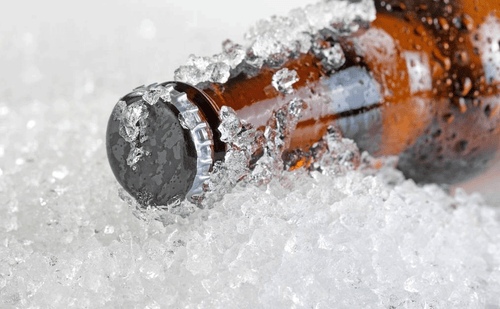Ingredients in Beer
Flowers and grains may not sound appetising at all, but add some water, ferment the concoction with yeast, and you get perfection in a drink! That’s right, it only takes four main ingredients to make the beer we love so much.
Water
 Image credit: Anderson Rian
Image credit: Anderson Rian
Water, earth, fire, air. Long ago, the four nations lived together in harmony. Then, everything changed when the- wait a minute, let’s rewind. As obvious as it may seem, water is indeed the main component of a beer.
Water is the structure that holds the beer and its flavours together. Without it, you have nothing, really. However, do you know that there are different types of water that can be used to change the composition of a beer?
 Image credit: Kate Joie
Image credit: Kate Joie
As we all know, water can consist of different types of minerals. Waters that have little minerals will be perfect for brewing clean and crisp beers like a Pilsner. On the contrary, waters that are rich in minerals are better for hop-forward beers, such as the Indian Pale Ales (IPAs), as they help to bring out the hoppy bitterness in the ale.
Malts
While water is the backbone of a beer, malts are the main culprits behind the different characters of your beers. What we mean is that the type of malt used determines much of the beer’s colour, smell, taste, and even the density and longevity of the beer’s head.
So, what exactly are malts? Malts are germinated grains whereby the grains are soaked in water and dried. The malting process helps to develop enzymes that turn the grain’s starches into sugars, and also helps to break down the proteins in the grain so that they can be utilised by yeast.

Image credit: Evi Radauscher
Some of the common types of grains used are barley, wheat, oats, and rye. Wheat gives a beer a bread-like taste, a hint of sourness, a thicker head, and a hazy body. Meanwhile, oats give your beers a fuller mouthfeel, with a taste that resembles oatmeal.
Alternatives to these grains are namely spelt, rice, and corn. Corn is typically used in American-style beers, and often causes a dry finish.
Hops
 Image credit: Bohdan Stocek
Image credit: Bohdan Stocek
Hops are yummy, fragrant, but also expensive. Thankfully, not all beers need a lot of hops, with the exception of hop-forward beers like IPAs, of course. Hops not only provide the hoppy aroma and bitterness in beers, but also help to preserve them with their antibacterial qualities (what a multi-functional queen!)
There are over a hundred types of hops, but they are divided into three main categories, whose names perfectly describe their functions.
 Image credit: Iain Robertson
Image credit: Iain Robertson
Firstly, we have the bitter hop, which is high in alpha-acids, thus making the beer pleasantly bitter during the brewing process.
Secondly, we have the aroma hop, which contains many volatile oils, thus releasing fruity, resinous, spicy, or floral aromas in the beer.
Lastly, we have the double target hop, which is basically a combination between the first two categories, as it contains both alpha acids and hop aromas.
Yeast

Image credit: Markus Spiske
Whatever you’re fermenting, be it bread, kombucha, wine, or beer - you’re definitely going to need yeast. Yeast helps to eat up the sugar in beers and create alcohol, carbonation, and other compounds that give beers their flavours.
There are mainly three different types of yeast used in beers: top-fermenting yeast, bottom-fermenting yeast, and wild yeast. Ales typically use top-fermenting yeast while lagers utilise bottom-fermenting yeast. Meanwhile, wild yeast types are often used in sour beers.
 Image credit: Oculyze
Image credit: Oculyze
Top-fermenting yeast, otherwise known as saccharomyces cerevisiae, works at higher temperatures of about 15-25°C. These types of yeast produce more esters, which results in fruity aromas and flavours in beers.
Bottom-fermenting yeast, otherwise known as saccharomyces pastorianus or saccharomyces carlsbergensis, works at lower temperatures of about 5-12°C. These types of yeasts create beers with a crisper and cleaner flavour profile.
Other ingredients in beer
Now that we’ve covered the four basic ingredients in beer, what else can one find in a beer? We’re not going to be able to list them all as you can pretty much use almost any ingredient you want in a beer. However, whether it’ll taste good is another question.
 Image Credit: Christina Rumpf
Image Credit: Christina Rumpf
Some other common ingredients in beer include coriander seeds, coffee, cherries, and citrus fruits. The possibilities are endless; there are tons of different beers out there.
Pro tip: a safer way for you to explore different beer flavours would be to choose a beer that has ingredients that you fancy!

